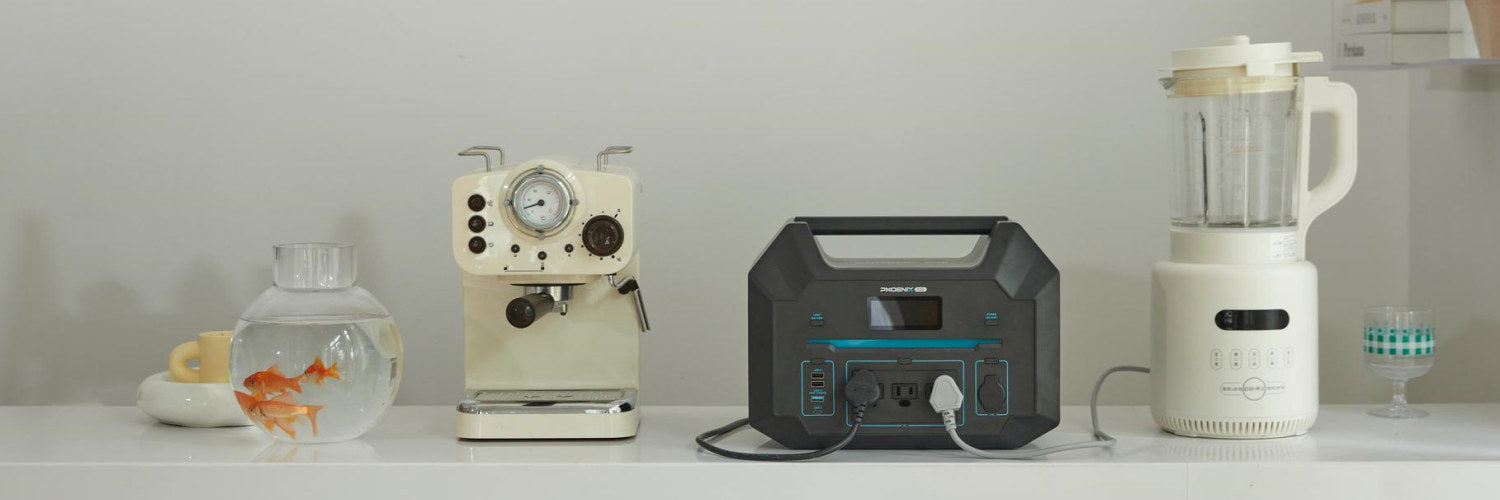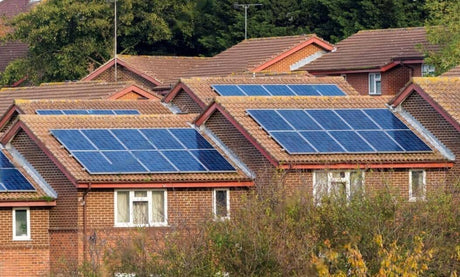The United Kingdom isn’t the sunniest of places. Every ray of sunlight needs to be captured and utilised in the most efficient way possible.
To make the most out of your solar panels, you either want to use the power as it is being generated, or store it in a battery for solar panel for later. Many people are out at work between the hours of 10 AM and 3 PM, which means that it’s far more realistic for them to store the power that they generate and use it later.
That necessity begs the question: ‘What size solar battery do I need in the U.K.’?
The answer depends on a few different factors, including what kind of home automation is available to you and whether you’re living on grid or off grid. Let’s talk about some of these scenarios, and then try to calculate the best solar storage battery size for you.
Home Automation To Reduce Battery Size
It might seem like a strange concept. How can home automation impact what size solar storage battery for solar panels you need in the U.K.?

Simply put, if you time major energy usage to happen during your peak sun hours, you won’t need to store as much. For example, let’s say that you set a load of laundry to fire off at 11 in the morning during the summer. That’s around 800 W being used instead of needing to be stored or being sold back to the grid (at a massive discount). Similarly, you could fire off your air conditioner to pre-cool the house between 1 and 2 in the afternoon. This will drastically reduce the amount of air conditioning your place needs when you get home.
Still, even with these automation tricks in place, you might need some home battery storage uk to make full use of any solar panel array in excess of around 2 kW.
What Size Solar Battery Do I Need In The U.K. If I’m On Grid?
For users on the grid, you want to optimise your battery for solar panels size for daily use during the average solar peaks. In other words, you want to use the energy as much as possible rather than selling it back to the grid. Why? Because selling back to the grid is only worth a fraction of what you actually pay for electricity. And if you aren’t able to sell back to the grid, the excess energy you generate is just wasted… unless you have a battery.
So to use the energy that you generate completely, you need enough home battery storage uk for solar panels to hold for use later in the day. Your battery for solar panel size should be big enough to hold the average amount of electricity that you sell back to the grid (or over-generate and waste) in one day. Larger capacities are fine, but that’s the minimum to consider.
Let’s say you have a 4 kW solar array. Average year-round peak solar hours in the U.K. are around three and a half. So you’ll produce 14 kW hours of solar power on your average day. After subtracting the energy you use during that period (including smart use of home automation as discussed above), you might calculate that you’re overproducing by 6 kWh during peak periods. If you are set up to sell back to the energy grid, you can confirm that by your sell-back statement.
So a 6 kWh solar panel battery is a good place to start in this example. The average family is likely to drain most of that during the evening hours, if not more. But that’s still power your generated yourself, rather than bought from the grid.
If the number that you come up with falls between two typical solar panel battery sizes (4 kWh and 6 kWh, for example) opt for the larger option. The break even point for solar power storage in the U.K. is around 7 years as of late 2022. And energy prices are projected to rise over the course of the next six months.
What Size Solar Battery Do I Need In The U.K. If I’m Off Grid?
Off grid users should make use of a solar powered calculator to estimate their power consumption. Remember that you need a southern facing for your vehicle, cabin, or boat’s solar panels to generate as much power as possible.
To convert from Amp hours (Ah) to kiloWatt hours (kWh), multiply the solar panels batteries voltage by the amperage, then divide by 1,000. For example, a 12V 200Ah solar panels battery is equal to 2.4 kWh.

For vehicles and boats, your lithium ion solar battery size should be based on three times your maximum hourly production or twice your daily usage, whichever is less. Normally, mobile or flexible panels will be exposed to somewhat less peak sun, because the angles of the panels won’t always be optimal. So budget your daily usage accordingly. You might also have a stretch of time where every other day is rainy, which is another reason to pick a slightly larger battery size if you have the option.
Note that these measurements are for lithium. For Absorbed Glass Matt (AGM) or Flooded Lead Acid (FLA), double your battery capacity and try to stay above 50% charge as much as possible. Otherwise the lifespan of your solar batteries will suffer.
For off grid cabins, you’re going to want a serious number of monocrystalline solar panels. During the Winter you’ll only have two and a half to three peak sun hours on average, and you want to produce as much as possible during that period. Generating 1.8 to 2 times your daily usage is optimal. If your cabin uses 5 kWh of electricity per day, you’ll want at least a 3.5 kW array (assuming that, in your area, around 9 kWh a day will be produced in the Winter). That way you can live off of your daily energy production and store the remainder for a rainy day… there will be many rainy days in the U.K.
Your lithium solar batteries size should be equal or in excess of your estimated daily production during the Winter. So for the example above, a 9 to 10 kWh battery bank isn’t out of the question. That will last you up to two days, even if it rains constantly.
Notice that lithium is specified. For an off grid cabin, you need something that can discharge fully without impacting the battery’s lifespan too badly. FLA and AGM just don’t cut it these days.
Now you can probably see why people often go for small, highly energy efficient cabins. A cabin that only uses 2.5 kWh of electricity per day has half of the solar array and battery requirements seen in the example above. But you won’t get all the luxuries of life, of course, nor will you be able to support the needs of a big family.
Best Solar Battery Storage For Off-Grid Living In The U.K.
With U.K. energy prices as high as they are in late 2022, and the projected costs for early 2023, the break even point on a battery storage system is less than 5 years! Check out Renogy’s line of solar panel batteries and battery monitors to fulfil your energy battery storage for solar panels needs.
Feel free to contact Renogy if you have any questions, and someone will get back to you as soon as possible.
Related articles:
Battery Storage for Solar Panels | 2022 UK Guide
What Is the Life Expectancy of a Solar Battery?
Battery Monitor vs Bluetooth Module: What's Best to Monitor Your System?









